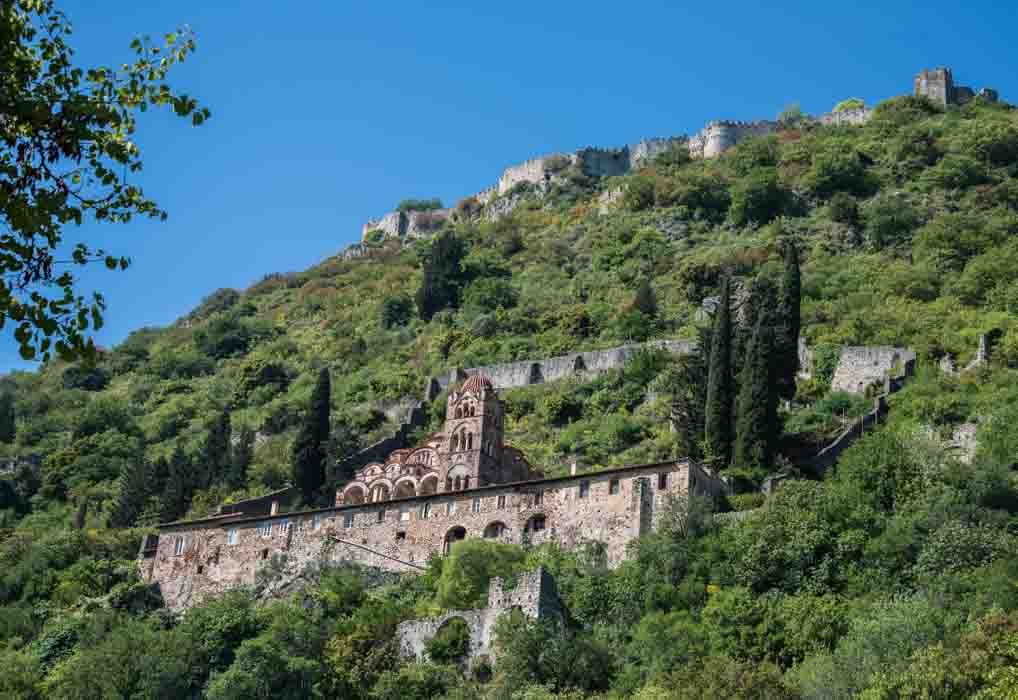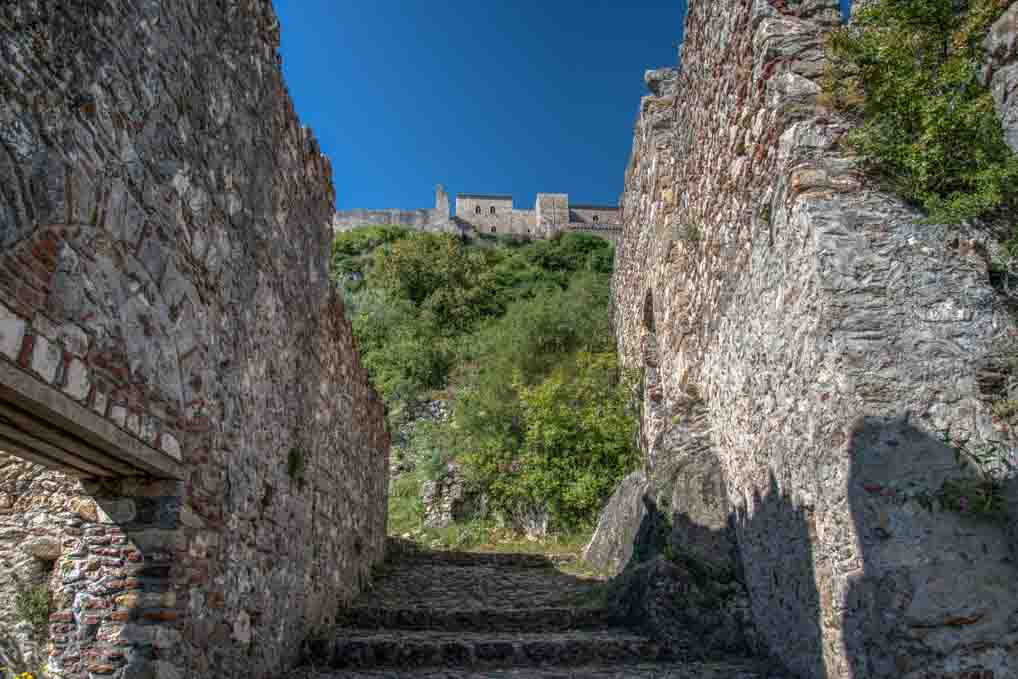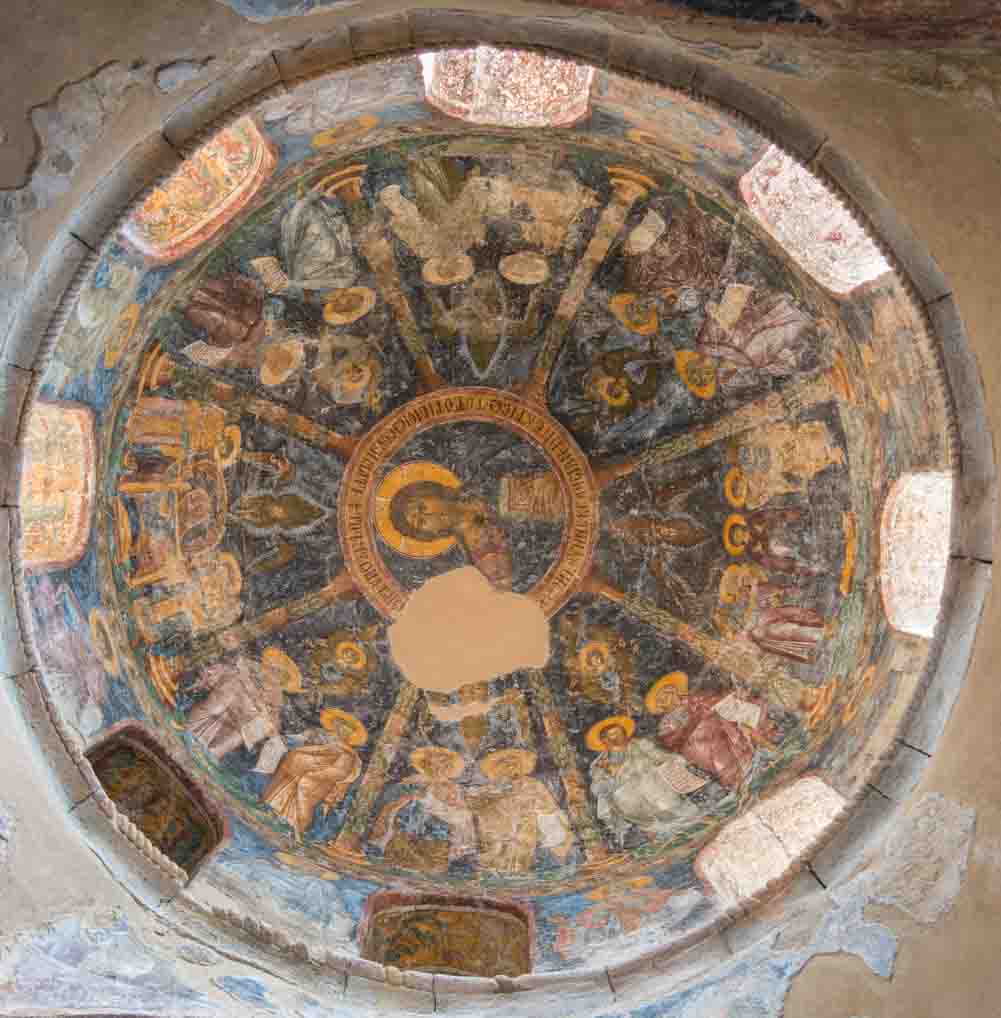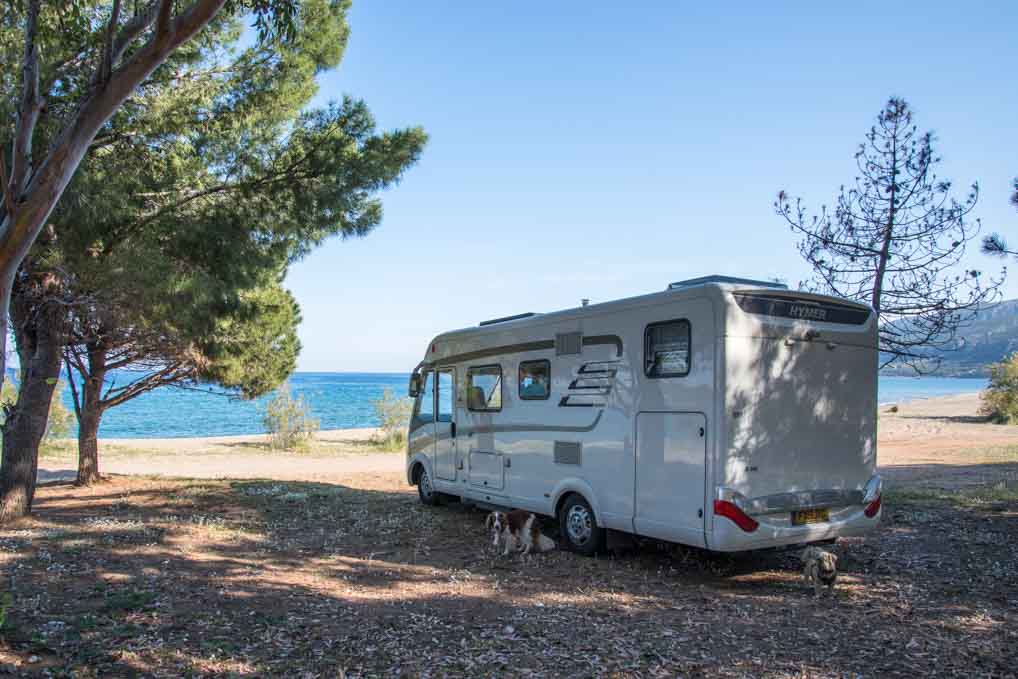Last night, after dinner, Sarah and I finished our Spartan day by sitting down to watch 300. It’s bloody, comic book depiction of the Battle of Thermopylae, filled in the mostly blank canvas that the site of ancient Sparta had been. We drifted off to sleep to the now familiar sound of barking dogs. At one point, in the early morning, both Sarah and I were awake and Sarah said “I can hear our friend”. I strained my ears and could discern, in the distance, the faint sound of my favourite Scops Owl; this time quiet enough for it to lull me back to sleep.
We were awake at the unearthly hour of 7am. We never get lie in because of the hyperactive spaniel that is Mabel, but 7am is a little early even for her. But for once this was a good thing, because I had discovered dogs were not allowed into our intended visit for the day: Mistras. We had decided we would try leaving the dogs in Basil for the duration of our visit and therefore we wanted to get there early to grab a shady parking spot.
After breakfast we drove the 5 miles or so to Mistras and had our pick of the parking spots. We made Basil as dog proof as we could and left Mabel and Melek to do their worst.

Mistras – Nunnery in the foreground, castle at the top
Mistras is yet another UNESCO World Heritage Site. You will see that I have a World Heritage Sites map on this blog and these UNESCO recognised locations will serve as a spine to our visits throughout this trip. They are the places in each country which both the country in question and the United Nations deem to be the most culturally, historically or naturally significant.

Interior of Mitropoli
Mistras was originated following the 4th Crusade, by the Franks as one of their strongholds to control the Peloponnese. This was in 1249, but within 10 years the Franks had lost their conquests in Greece to the Byzantine Empire and from then until Byzantine’s fall to the Turks in the 15th Century, Mistras became essentially the Byzantine capital in the Peloponnese. The Byzantines built a castle, palace and a large number of churches, influenced by Eastern and Western Christianity. The Turks occupied it, turning the churches into mosques and subsequently, believe it or not, it was occupied by the Venetians, Russians, Albanians and Egyptians before falling into disuse in the 19th Century.

Mistras – The palace shot from Mitropoli
The town stretches up the extremely steep sides of a mountain, near to Sparta. Most buildings are still visible, although all but the churches, palace and castle, are mostly ruins. We were the first into the site and had it to ourselves. At €12 a head the price has more than doubled since both of our guide books were last updated. I think this is as a result of the Greek financial crisis, as we have found similar uplifts at other sites.

Mistras – Palace at the top
In the early sun we wandered up the meandering paths visiting the beautiful churches, a still active nunnery and one or two of the houses which have been preserved. As an overall site it is one of the most impressive we have visited. It’s completeness gives a real sense of what a Byzantine town may have looked like. Some of the individual buildings were equally impressive. Many of the churches still had beautiful, if somewhat decayed, frescoes adorning their walls. Unfortunately the palace was closed for renovation.

Frescos
It is not an easy visit. With it’s location on a steep mountainside, it combines cultural enlightenment with a full cardio workout! I’m glad we visited early in the day and early in the year. I would think touring the whole site in the heat of summer could be a gruelling experience.

St. Theodore’s Church
We arrived back at Basil to find that the dogs had discovered that we had not put our newly purchased bread in a safe place. Basil’s interior was full of bread crumbs and Mabel and Melek’s interiors were full of bread!
Multiple coaches had now arrived, one full of extremely elderly British visitors. A few of them struggled to get up the gentle slope from the coach to the entrance booth. Sarah and I wondered how much further most of them would get! We presume, given that there were four coaches, that these are visitors from a cruise ship docked in Gythion.
We then headed east for our next destination: Monemvasia. This is another, formerly abandoned, Byzantine stronghold on a small island which we intend to visit tomorrow.
After a quick stop to top up our bread supply, we headed to a series of potential wildcamping spots I had programmed into SatNav. After a two hour drive on easy, good quality roads (a rare occurrence for us), we arrived at the first potential overnight location (36.728099, 23.025981). As we pulled into a small grove of pine trees, set behind a deserted beach with island of Monemvasia in the distance, we almost immediately decided this was where we would stay for the night. The beach must be nearly two miles long and only has a few houses at one end, the rest backed by pines and olive trees.

Basil’s overnight spot
After lunch Sarah and I walked a few yards and laid on the beach until the dogs got too hot and restless.

Our beach for the night!
There are two other campers, otherwise we have the place to ourselves!
